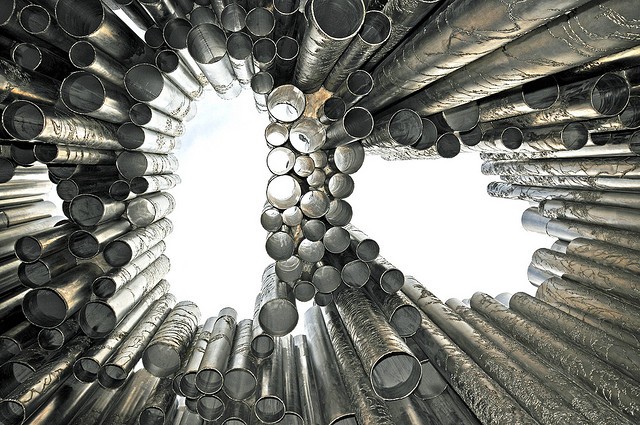
With that level of importance, a smart builder ensures that any piping he uses is good quality. There are many ways that this can be done, from the Charpy impact test to magnetic particle inspection.
Even if you don’t personally run tests on your steel, it’s a good idea to know what kinds of tests might be done on it and have a general idea of how they work.
Hydrostatic Testing
One of the most common methods for testing pipe is hydrostatic testing.
This test is used to find leaks and to pressure-test vessels that will be used to contain liquids and gasses. It works by filling the pipe with a liquid and then pressurizing it to a specific level.
However, hydrostatic testing is only the tip of the iceberg when discussing methods for inspecting steel pipe.
Ultrasonic Testing
Ultrasonic tests can be run to determine the wall thickness of a pipe, which is important in determining what pressure it can contain and how much it can support as a structural component.
Ultrasonic testing, also known as “UT”, is performed by transmitting a high frequency sound wave through the outside of the pipe and bouncing it off the inside wall. The travel of the sound wave is carefully measured and the results are used to gauge the wall thickness of the pipe.
Knowing the wall thickness is useful in pipe inspection, because it allows an inspector to find corrosion and imperfections.
Magnetic Particle Inspection
One of the more complex tests is magnetic particle inspection.
By subjecting the pipe to a magnetic field, any imperfections can be found by applying iron particles. The imperfections change the magnetic field, attracting the iron to the location of the problem spot.
The most common type of MPI machine is bench mounted and stationary, though there are portable and hand-held versions.
Charpy Impact Test
The Charpy impact test is used to measure a material’s toughness.
Its advantages include ease of performance and cheapness, but some of the results are qualitative, meaning they must be compared with each other.
Charpy testing usually involves swinging a weighted pendulum from a known height onto the material to be tested. The results of the collision are then observed.
The Charpy test is particularly useful in determining ductility or brittleness.
Positive Material Identification Test
Another highly complex test is the positive material identification test.
The machines that perform these tests are XRF machines, or X-Ray Fluorescence machines. They emit a weak X-ray radiation, which causes the material being tested to “fluoresce” or emit its own signature X-rays.
Every element emits a different signature, allowing the machine determine the material type with an high degree of accuracy.
These are just a few of the battery of tests that can be used to determine the quality of steel piping, but even a little knowledge of test types can help you find more information on them.
—
Federal Steel Supply: The preferred steel pipe provider of the global community since 1979.











